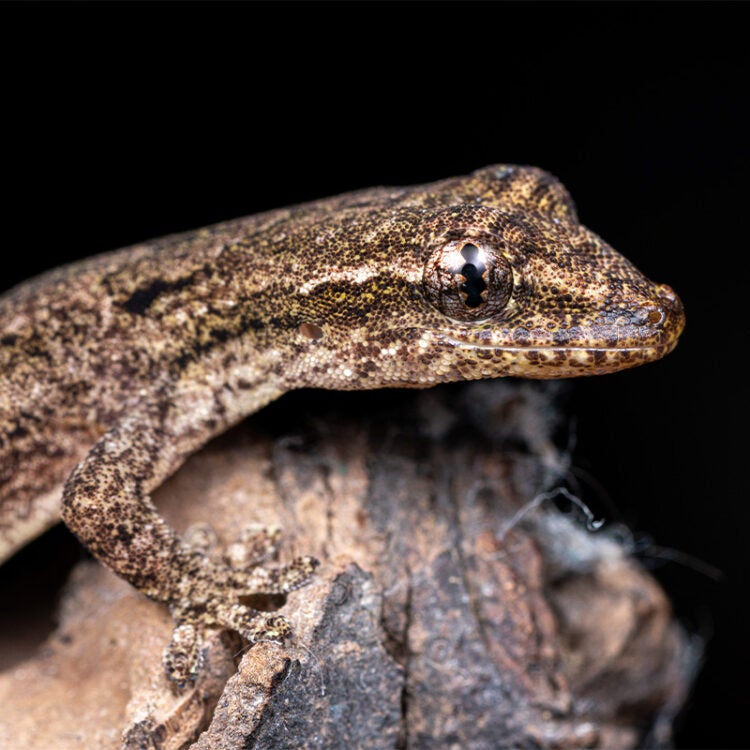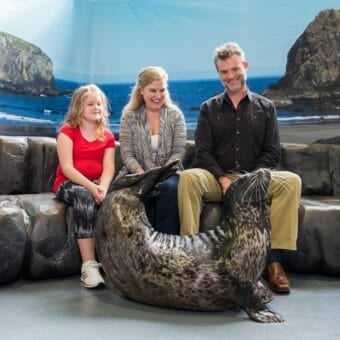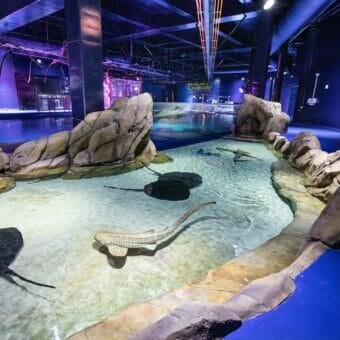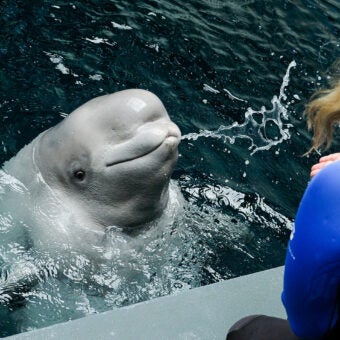-
Size
2.7-3.7 inches (7-9.5 cm) -
Diet
Insects, spiders, nectar and ripe fruit -
Range
North, Central and South America, Australia and many Pacific islands -
Habitat
Trees, bushes
Physical Characteristics
- Small, stout-bodied lizard, reaching a maximum size of 2.7-3.7 inches (7-9.5 cm).
- The skin on the back is smooth and lacks tubercles (small projections on the skin of many amphibians and reptiles that gives them a “warty” look).
- A dark line runs horizontally between the eyes, with another dark line extending from the tip of the snout, through the eye and onto the neck.
- Coloration includes thin, dark chevron lines separating lighter patches of skin.
Diet / Feeding
- Opportunistic predator: diet consists of insects, spiders, amphipods, pill bugs, nectar and ripe fruit.
- Nocturnal species, feeding primarily at night.
Range / Habitat
- Occurs in North, Central and South America, Australia and across many Pacific islands.
- Native to southeastern Asia.
- Found in a variety of human-modified habitats, from desert to tropical climates.
- Usually found on trees or in bushes.
Reproduction & Growth
- Parthenogenetic; all-female species that reproduce without males.
- Females produce clutches of two eggs throughout the year.
- Eggs are deposited in communal nesting sites such as crevices, holes, leaf axils, or under logs, lumber bark and leaves.
- The eggs hatch between 65-103 days.
- Females may produce male offspring, but the male is infertile.
- The resulting offspring is a near-identical clone of the mother.
- Mothers’ genes are able to recombine and produce some genetic variation in offspring, which is important for adaptation.
Conservation Status
- “Least Concern” on the IUCN Red List.
- An invasive species, the mourning gecko is native to southeastern Asia. Can now be found in North, Central and South America, Australia and across many Pacific islands.
Additional Information
- Eggs are sea-water resistant, making it likely that some eggs could drift long distances across the ocean on uprooted trees or patches of vegetation washed out to sea from floods.
- Uses a long tongue to clean eyes of dust or other particles.
- Gregarious: uses sounds and head bobbing to communicate.
- If threatened, this species will flee into crevices or under objects. Can easily shed the tail if captured.
- Predators include birds, mongooses, American bullfrogs, Santa Cruz lava lizards, common house geckos, snakes, praying mantids and spiders.
- Parasitized by a variety of worms.






